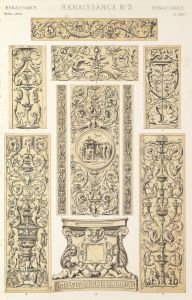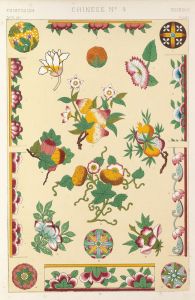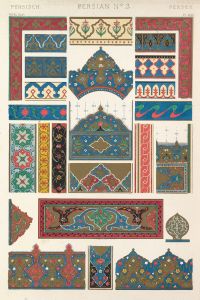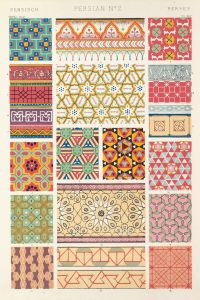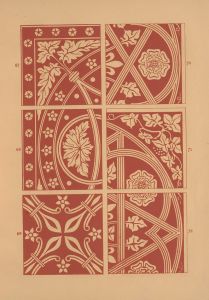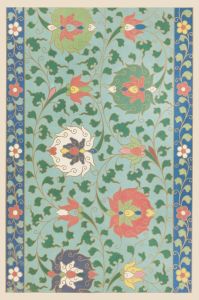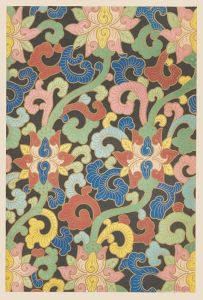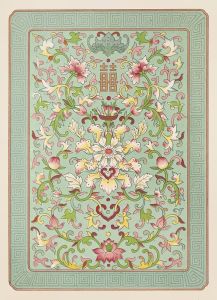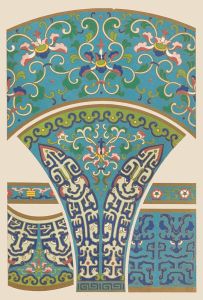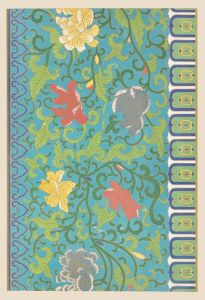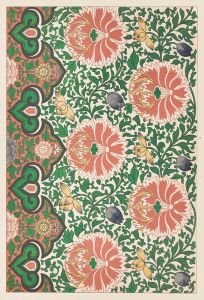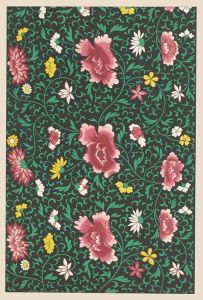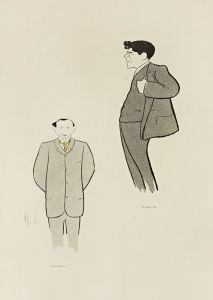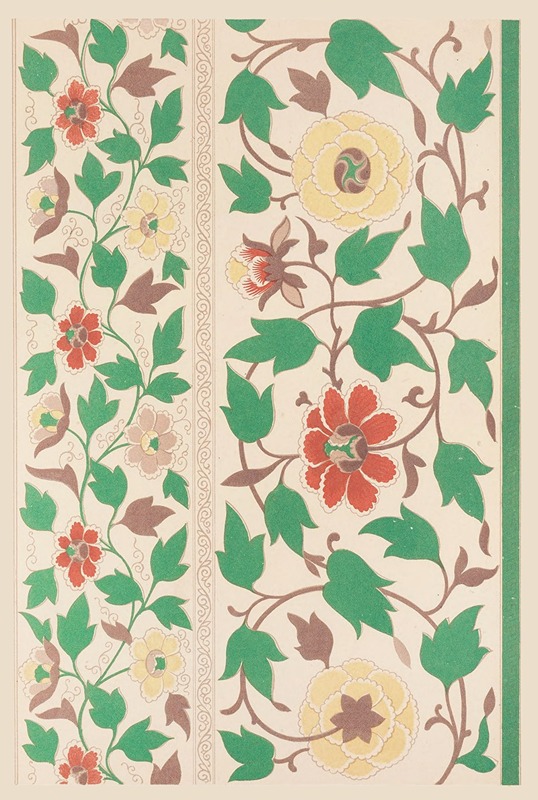
Examples of Chinese ornament, Pl.89
A hand-painted replica of Owen Jones’s masterpiece Examples of Chinese ornament, Pl.89, meticulously crafted by professional artists to capture the true essence of the original. Each piece is created with museum-quality canvas and rare mineral pigments, carefully painted by experienced artists with delicate brushstrokes and rich, layered colors to perfectly recreate the texture of the original artwork. Unlike machine-printed reproductions, this hand-painted version brings the painting to life, infused with the artist’s emotions and skill in every stroke. Whether for personal collection or home decoration, it instantly elevates the artistic atmosphere of any space.
"Examples of Chinese Ornament, Pl.89" is a plate from the influential design book "The Grammar of Ornament," authored by Owen Jones and first published in 1856. Owen Jones was a British architect and designer known for his work in color theory and ornamental design. His book aimed to provide a comprehensive guide to the decorative arts, drawing from a wide range of cultures and historical periods.
"The Grammar of Ornament" is divided into 37 sections, each focusing on a different style or culture, including Egyptian, Persian, Greek, Roman, and Chinese, among others. The book is renowned for its vivid chromolithographic plates, which were groundbreaking at the time for their use of color and detail. Jones's work was instrumental in popularizing the study of design and ornamentation in the 19th century, influencing architects, designers, and artists.
Plate 89 specifically showcases examples of Chinese ornamentation. Chinese art and design have a long and rich history, characterized by intricate patterns, symbolic motifs, and a deep connection to cultural and philosophical concepts. Common themes in Chinese ornamentation include natural elements such as flowers, birds, and landscapes, as well as mythical creatures like dragons and phoenixes. These motifs often carry symbolic meanings, such as prosperity, longevity, and harmony.
Jones's depiction of Chinese ornament in Plate 89 reflects his appreciation for the complexity and beauty of these designs. He sought to highlight the unique characteristics of Chinese art, such as its use of symmetry, balance, and vibrant colors. The plate likely includes a variety of patterns and motifs, demonstrating the diversity and richness of Chinese decorative arts.
Jones's work was part of a broader 19th-century movement that sought to document and study the art and design of non-Western cultures. This interest was partly fueled by increased global exploration and trade, which exposed Western audiences to a wide array of artistic traditions. "The Grammar of Ornament" served as a resource for designers looking to incorporate exotic elements into their work, reflecting the Victorian era's fascination with the "Orient" and other distant lands.
While Jones's work was pioneering in its scope and ambition, it is important to approach it with an understanding of its historical context. The 19th century was a time of colonial expansion, and Western interpretations of non-Western art were often filtered through a lens of exoticism and cultural superiority. Nevertheless, "The Grammar of Ornament" remains a valuable resource for understanding the history of design and the ways in which different cultures have influenced one another.
In summary, "Examples of Chinese Ornament, Pl.89" by Owen Jones is a testament to the beauty and complexity of Chinese decorative arts as seen through the eyes of a 19th-century Western designer. It reflects both the admiration for and the challenges of accurately representing non-Western art in a period marked by cultural exchange and colonial attitudes.





